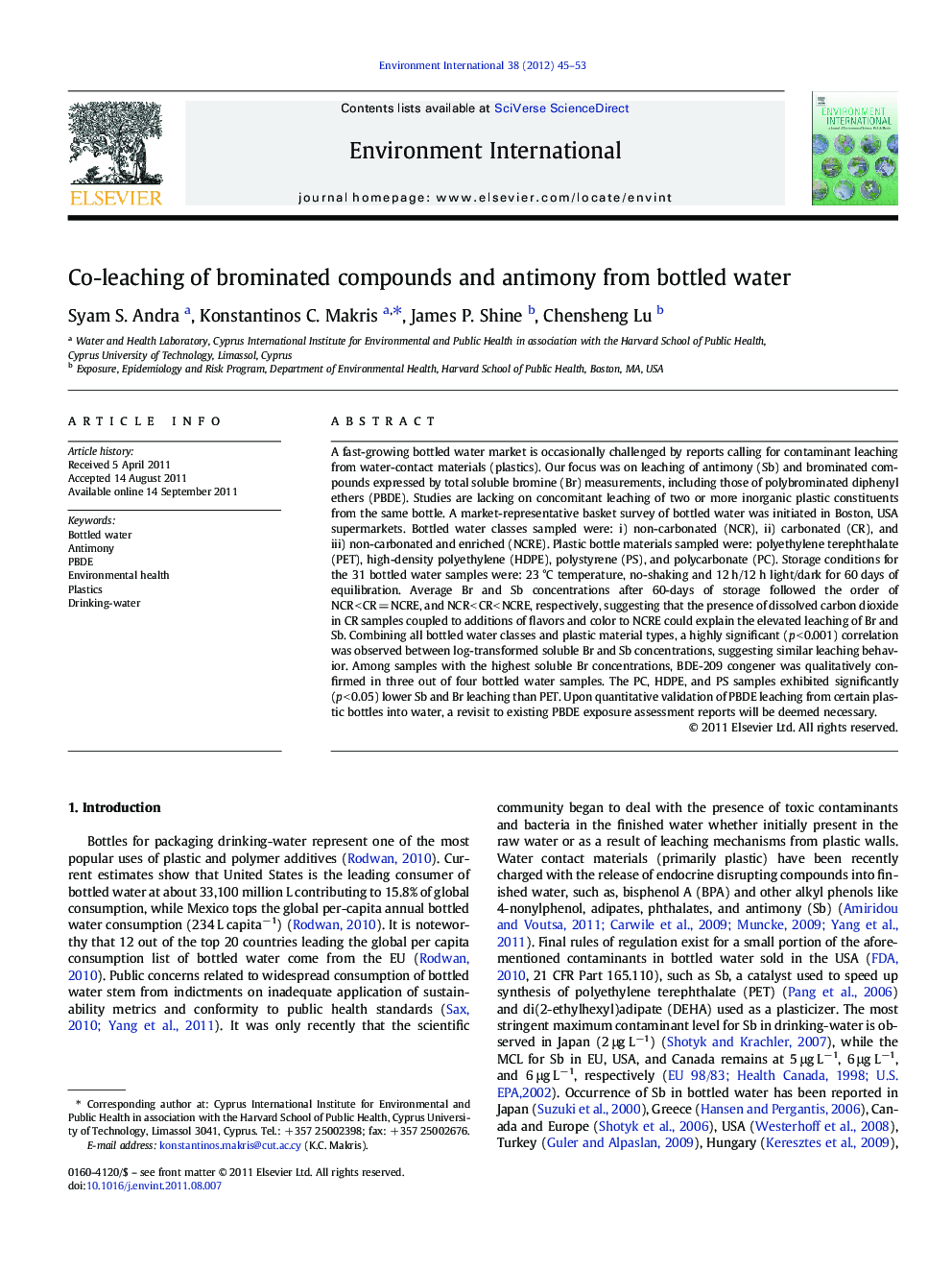| Article ID | Journal | Published Year | Pages | File Type |
|---|---|---|---|---|
| 4423161 | Environment International | 2012 | 9 Pages |
A fast-growing bottled water market is occasionally challenged by reports calling for contaminant leaching from water-contact materials (plastics). Our focus was on leaching of antimony (Sb) and brominated compounds expressed by total soluble bromine (Br) measurements, including those of polybrominated diphenyl ethers (PBDE). Studies are lacking on concomitant leaching of two or more inorganic plastic constituents from the same bottle. A market-representative basket survey of bottled water was initiated in Boston, USA supermarkets. Bottled water classes sampled were: i) non-carbonated (NCR), ii) carbonated (CR), and iii) non-carbonated and enriched (NCRE). Plastic bottle materials sampled were: polyethylene terephthalate (PET), high-density polyethylene (HDPE), polystyrene (PS), and polycarbonate (PC). Storage conditions for the 31 bottled water samples were: 23 °C temperature, no-shaking and 12 h/12 h light/dark for 60 days of equilibration. Average Br and Sb concentrations after 60-days of storage followed the order of NCR < CR = NCRE, and NCR < CR < NCRE, respectively, suggesting that the presence of dissolved carbon dioxide in CR samples coupled to additions of flavors and color to NCRE could explain the elevated leaching of Br and Sb. Combining all bottled water classes and plastic material types, a highly significant (p < 0.001) correlation was observed between log-transformed soluble Br and Sb concentrations, suggesting similar leaching behavior. Among samples with the highest soluble Br concentrations, BDE-209 congener was qualitatively confirmed in three out of four bottled water samples. The PC, HDPE, and PS samples exhibited significantly (p < 0.05) lower Sb and Br leaching than PET. Upon quantitative validation of PBDE leaching from certain plastic bottles into water, a revisit to existing PBDE exposure assessment reports will be deemed necessary.
► First report on possible leaching of BDE-209, polybrominated diphenyl ether into bottled water. ► Carbonated and enriched bottled water classes along with plastic type influenced leaching of Sb and Br. ► PC, PS, and HDPE plastic types exhibited smaller Sb and Br leaching when compared with PET.
